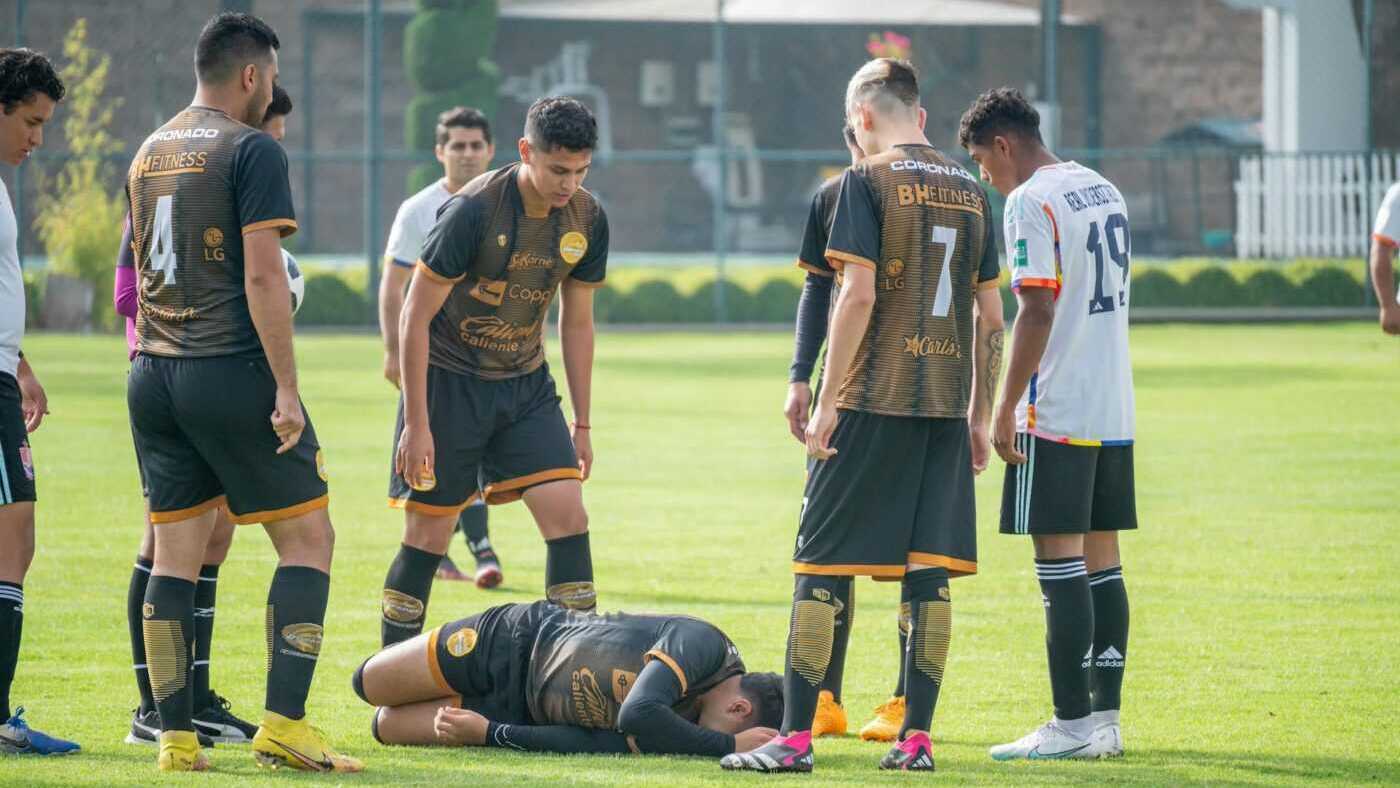Humanism
Superintelligence Will Destroy Humanity: Professor Roman Yampolskiy’s Warning
05 December 2025

The trend for healthy living advocates numerous physical training sessions and body sculpting through exercise. However, not every form of physical activity benefits our health. Italian scientists have found that the risk of sudden death for a young athlete is three and a half times higher than for their non-sporting peer. By the early 1990s, 33 footballers had died on the pitch; in the last 20 years, over 50 such deaths have been recorded.
“Moderation is best,” advised the Greek poet Cleobulus of Lindos, counted by Plato among the seven greatest sages of antiquity. It is hard to disagree, especially when looking at injury statistics related to overtraining – both for amateur and professional athletes. Among the two-thirds of Poles who engage in some form of sport, about 37% have reported experiencing at least one injury in their lifetime, leading to absences from work, school, or university, as well as unforeseen expenses. The sports most prone to injuries are football, followed by volleyball and basketball. Swimming, running, cycling (the most widespread physical activity), and fitness carry significantly lower injury risks.
At the outset, let me clarify that I do not deny the positive role sport plays in maintaining health. Numerous studies prove that physical activity is highly recommended and has beneficial effects on various aspects of human life. It improves and prolongs the efficiency of the musculoskeletal system and has a positive impact on the body – not just physically, but mentally as well.
Multiple publications confirm that daily physical exercises result in an additional 2,000-3,000 kcal burned weekly, or 300-400 kcal daily. Even modest, regular effort – about 15 minutes a day – reduces the risk of cardiovascular diseases, diabetes, and cancer while extending life expectancy. It favorably affects fitness and performance, improves immunity, and delays aging. Movement causes the production of special substances that activate the immune system. Muscles secrete myokines, which prevent infections and mitigate the negative effects of substances secreted by fat cells. Training helps improve control of glucose metabolism, with excess glucose being a significant risk factor for various ailments.
Where, then, is the boundary beyond which the risk of adverse effects – injuries or more serious traumas – increases?
The risk of accidents during training always exists, but it can be mitigated. “Our physical capabilities are a function of age and the lifestyle we’ve led. Sporting activities should be tailored to the individual. Otherwise, we may do more harm than good,” says Dr. Michał Chudzik, an internist and cardiologist, member of the Polish and European Society of Cardiology. “Excessive effort puts unnecessary stress on the body. The amount of effort must be balanced with adequate rest, and the best way to regenerate is through sleep,” he adds.
We recommend: The Brain Likes What Is Known. Why Do We Regard People as Pretty or Ugly?

Injuries do not spare even the greatest professional athletes. Sometimes they end happily. Such was the case with Brazilian footballer Ronaldo, one of the world’s best strikers, who twice ruptured ligaments in his right knee after 1998 and was sidelined for over two years. This did not prevent him from making a grand comeback, winning the World Cup with Brazil and claiming the top scorer title. Another example is Swiss ski jumper Simon Ammann, who fell face-first onto the landing slope in 2002. Despite an initial poor prognosis, he underwent successful rehabilitation, competed in the Salt Lake City Olympics, and won two gold medals.
On the other hand, statistics show that the risk of sudden death among elite athletes is significantly higher than in the population of amateur athletes or non-athletes. Recent years have seen a notable increase in fatalities during competitions or exercises.
By the early 1990s, 33 footballers had died on the pitch; in the last 20 years, over 50 such deaths have been recorded. Among the departed were Cameroonian Marc-Vivien Foé (2003), Hungarian Miklos Feher (2004), Spaniards Antonio Puerta (2007) and Daniel Jarque (2009), and in Poland, third-division Wisła Szczuczyn striker Emil Świderski (2010).
Representatives of other disciplines also die suddenly; 37-year-old volleyball player Vigor Bovolenta, a former Italian national team member, collapsed on the court saying he felt dizzy – life-saving efforts were unsuccessful. Polish Olympic champion in the hammer throw, Kamila Skolimowska, died in 2009 during training at the age of 27. She suffered a pulmonary embolism and heart attack.
Scientists have repeatedly studied groups of professionals for the risk of unexpected death. Italians observed athletes in the 4-million-strong Veneto province for many years. Based on the histories of 40,000 individuals, they found that the risk of sudden death for a young athlete is three and a half times higher than for their non-sporting peer.
Mortality in the sports field, estimated from American studies, ranges from one to two per 100,000 training individuals, equating to one sudden death every three days in the country. Even more dramatic results were reported in a 2011 French publication, where the risk of sudden death in elite athletes was four and a half times higher than in people of the same age who engaged in recreational sports. Men die significantly more often than women (up to 10 times more).
The most common cause of sudden death in athletes is sudden cardiac arrest, often due to previously undetected heart or vascular disease. Other causes (for example, neurological or complications from injuries) occurred with equal frequency in professionals and amateurs. Interestingly, sudden deaths occurred twice as often during training as during competitions.
We recommend: The Comfort of Kitsch. Why We Need “Bad” Art

While the aforementioned data should prompt all athletes to undergo regular check-ups, there is no need for panic. Especially since amateur sports differ from professional ones (though the lines can blur). The rules among professionals are different, dominated by performance pressure, training rigor, months-long form-building, record-breaking, dietary, biological, and medical regimens, etc. Simply put: professional sport serves results; amateur sport serves the individual.
To ensure that training is as beneficial as possible for our health, one should follow some basic principles. Firstly, consider the age. After age 25, the aging process accelerates, and the risk of injury increases. Therefore, warm-ups are crucial – the older one gets, the longer they should be. Secondly, if one suffers from chronic diseases such as hypertension or diabetes, one must have them under control before even starting training (best to consult a doctor). Then, exercise will aid treatment. 40-60 minutes of physical effort daily, 4-5 days a week suffices – this could be running 10 km or cycling 25 km (it is best to regularly vary exercise types).
Thirdly, if overweight, one should slim down before intense training; otherwise, there is a risk of injury. More intensive sports are only advisable when the BMI is below 28 units. It is important to know that a healthy rate of weight loss is about half a kilogram per week. Fourthly, one should cut the coat according to the cloth. Setting overly difficult goals, excessive bodily strain, and using performance-enhancing substances pose potential health risks.
Numerous injuries are the domain of a certain social group called “weekend warriors”. These are typically ambitious middle-aged men, active in life, heavily engaged in professional work, who played sports in their youth but then stopped. Their dormant need for competition makes them plunge into some sports discipline on free days, for example, running, cycling, going to the gym, doing triathlons, playing tennis or football. Because they do this impulsively, subconsciously wanting to match their youthful achievements, they often suffer injuries. They are among the most frequent patients of surgeons and orthopedists.
When asked for the secret to long health, British Prime Minister Winston Churchill, who lived over 90 years, tersely replied, “No sports.” Even considering the English sarcasm in this statement, it is worth remembering that in this field, as in almost every other, moderation is best.
Translation: Klaudia Tarasiewicz
Read the text in Polish: Sport to nie zawsze zdrowie. Kiedy aktywność fizyczna szkodzi?
Humanism
05 December 2025



Zmień tryb na ciemny